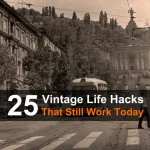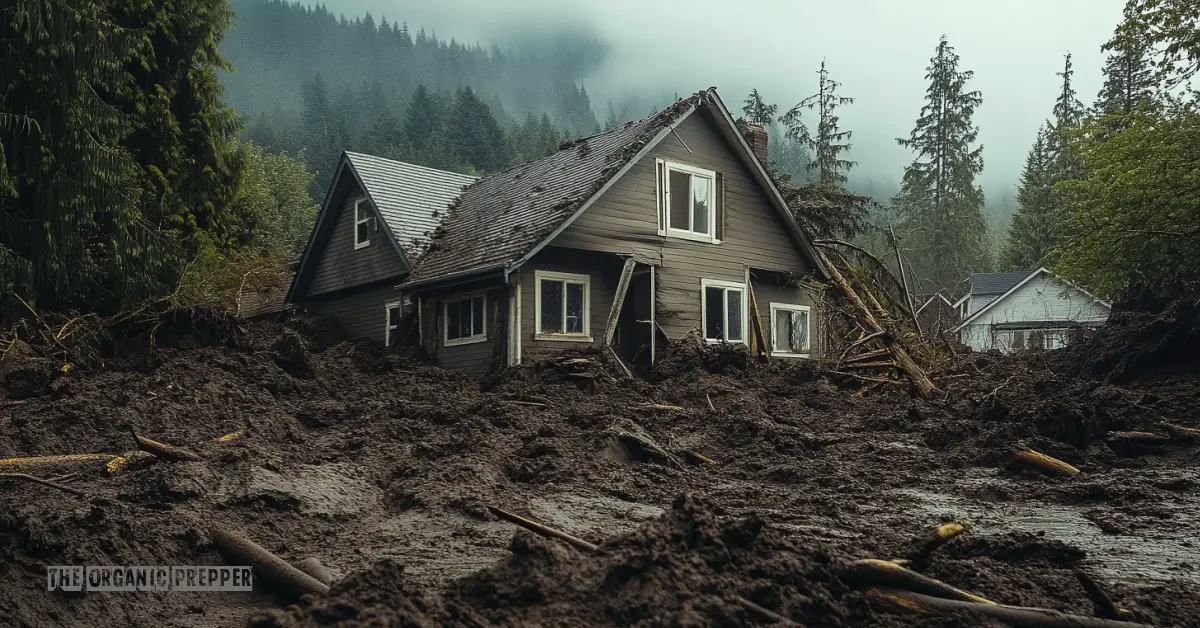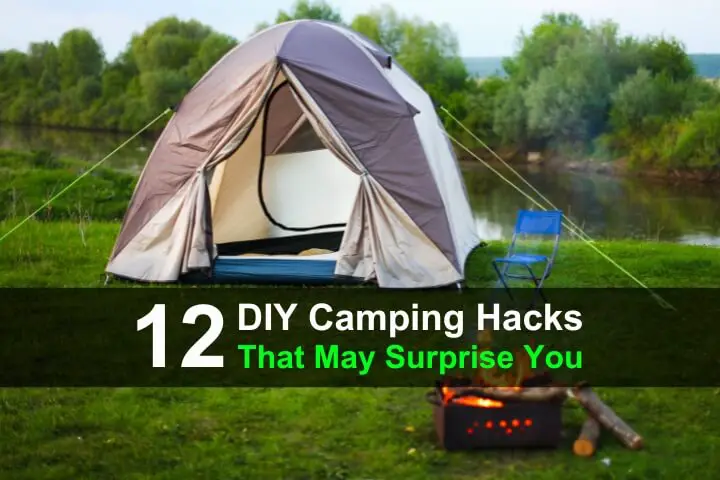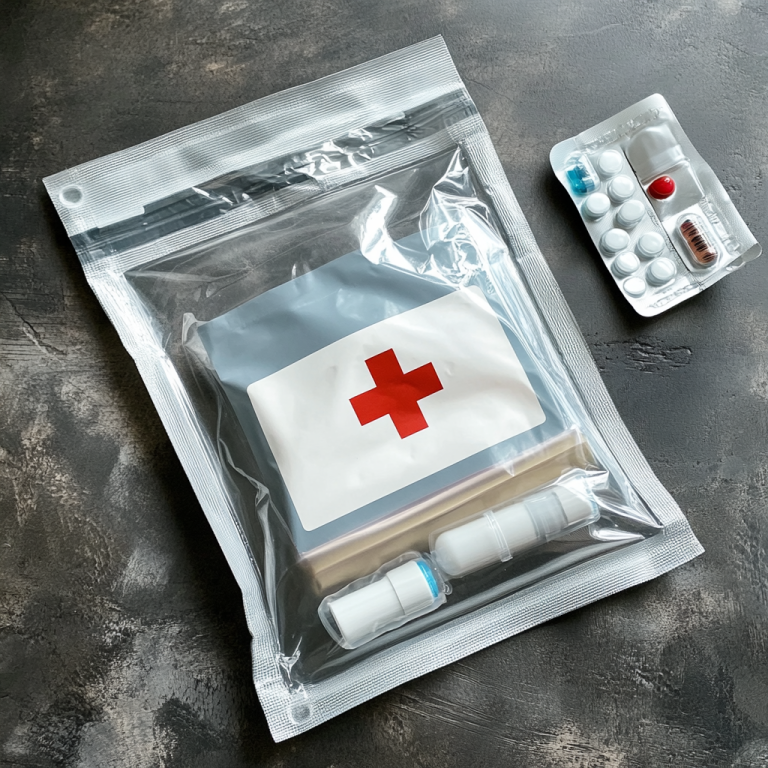(Psst: The FTC wants me to remind you that this website contains affiliate links. That means if you make a purchase from a link you click on, I might receive a small commission. This does not increase the price you’ll pay for that item nor does it decrease the awesomeness of the item. ~ Daisy)
Author of How to Prep When You’re Broke and Bloom Where You’re Planted online course
The folks of the Appalachians in Western North Carolina and Eastern Tennessee are still suffering a month after Hurricane Helene tore through the area and wiped parts of the area right off the map. At least 7300 homes were still without power as of Tuesday, and that’s just the homes that remain standing. The power outages could remain in mountainous areas for 9-12 months. The water in Asheville, though some of it is restored, is not safe to drink still, and a swath of the population in the mountains is still living without fresh running water. Hundreds of roads are still impassible, many bridges will be out for the foreseeable future, and life in the region is far from “normal.” In fact, it’s a disaster zone.
And it’s extremely widespread. It’s not like this was one little town that you can easily leave and stay someplace nearby. It was a large area and with the extensive road damage, leaving isn’t that simple.
It got me thinking about what supplies would be best to help a family through an event like that – and this is assuming your house remained standing.
Keep in mind that if your home has been washed away or buried in mud from landslides, it wouldn’t matter how many supplies you had put back, because your home and everything in it is gone.
I’m not trying to play Monday morning quarterback here. It’s essential to recognize that there was absolutely no way anyone could have prepared for an unprecedented event that destroyed every single building in some small towns.
But I think there are things we can learn from the aftermath that could help us to be better prepared for such a life-altering disaster.
Shelter
If your home is carried away, and your roads are washed out, and you’ve managed to keep everyone alive, that’s a major accomplishment. The next step is to continue to keep them alive.
Hopefully, you will still have access to some camping gear or tarps, but if not, you’ll need to be adept at using what is present to build yourself a shelter. A book like this can be very helpful to learn how to make yourself a viable shelter.
But note that the book probably floated away with the rest of your belongings. That’s why you must get out there and practice this stuff long before the disaster occurs. You can’t depend on having written instructions at a time like this – you need to master the skills to do this ahead of time.
Water and Sanitation
Water has been an issue for people whether their homes remained standing or not. First of all, thousands of homes still don’t have running water. If you have a well pump that runs on electricity, that water is staying underground unless you have another way to access it.
If you’re fortunate, you’ll have a manual hand pump to get the water out of the well. However, this doesn’t mean that the water is safe to drink. You may need to boil it or filter it before drinking, even if it’s coming from your taps. Your well may need to be shocked to make sure it’s safe to drink.
If you are getting it from an outdoor source, I’m a big fan of using a multiple-level method of purifying water at times like this: filter to get any chunks out, boil, and then treat with Aquatabs. You simply cannot be too safe when it comes to water. One of the primary ways that people die in the aftermath of a long-running disaster is from waterborne illness.
I also recommend a way to test your water. A kit like this can detect all manner of impurities and bacteria.
The problem is, in the disaster zone, most of the water is not just unsafe. It’s absolutely toxic, and there’s no way to purify it. People are having to find a way to bring water in to have safe water to drink. There’s no telling how long it will be before the water is pure again. The only way around this is stored water, and lots of it. And again, that assumes your home has remained standing and unflooded.
You’ll also need a way to go to the bathroom when the toilets aren’t flushing. If you live out in the boondocks, it’s a lot easier to go outside for these necessities. You can’t do your business too near your water source, and being able to bury it is probably the best way to handle it.
You will need a way to remain sanitary, which might be personal wipes and bleach wipes, hand sanitizer, and cautious strategies. After changing diapers, going to the bathroom, and before preparing food, you absolutely must make sure your hands are clean to help prevent illness.
The mud there is also toxic and making people ill. It’s something many of us haven’t considered previously. It’s ever-present, filling homes with muck and outside where there used to be roads. A way to take a shower could not only be pleasant – it could be lifesaving.
Power
Another major issue being faced is the lack of power. Thousands of homes don’t have electricity yet.
There are many options for generators. A whole house generator is great if you have the fuel to run it. But I think a lot of folks would be happy just to have a little bit of power for charging phones and communication equipment, and maybe running a light at night.
I have this solar generator, which has provided great service for me in the years that I’ve owned it. I haven’t had a single issue with it. The battery, once charged, is long-lasting, and the solar panels recharge it back up in about a day. I’ve also used and enjoyed the Jackery, but the equivalent is quite a bit more expensive than the Oupes.
Communications
We have seldom witnessed the importance of communications as much as this disaster.
Many people have been stranded at their homes for the better part of a month due to roads and bridges being out. They can’t call 911. They can’t let their families know that they’re okay. Cell service is down, there’s no internet and there are very few ways to learn what’s happening in the world outside their area.
One thing that has sprouted up is the ham radio network “Project Helene.” It’s an incredibly important service that gives briefings and information at a specific time each day and are helping people communicate their needs and let their families know that they are alive.
If you don’t have a ham radio set up, this may be enough to convince you that you need one. (Learn more about emergency communications here.) Look into building your own ham system but note that you WILL need some source of power.
Another way that folks are communicating is with Starlink. Elon Musk has been very generous in donating terminals, satellite phones, and expanding access in the area. You might be interested in your own Starlink set-up before the next disaster strikes. Keep in mind that you will need a way to power the receiver – one of the solar generators above would be ideal.
Food
The importance of emergency food has never been more obvious than in this disaster. With flood damage and an inability to cook, I think canned goods are probably the most useful at this point in time. Why?
- You can eat it without cooking it (or even without warming it)
- The can will protect the contents from water.
- The contents won’t be contaminated by nasty stuff flood water. (Though you need to carefully clean the can before opening it.)
At this point, I doubt folks are being excessively picky, but things like tuna, canned pasta meals, canned fruits and vegetables, and canned beans would be excellent to have on hand. You’re not in this for gourmet meals or perfectly balanced diets. You’re in it to survive.
Some people are cooking with campfires in the yard, while others use propane barbecues or cookers. If your home is still standing and you have a gas stove, then you’re ahead of the game.
This isn’t a comprehensive list.
It would take an entire book to create a comprehensive survival guide for this level of crisis. These are five of the things that have been deeply affected in the Appalachian disaster and they’re also pretty essential.
I can’t overstate the importance of skills at times like this. Knowing how to create shelters, purify water, snare animals for meat, and cook over an open fire are things that are vital to your survival.
We also need to remember that it took FEMA more than a week to arrive. Most people couldn’t reach 911, and even if they could, it was difficult, if not impossible, for first responders to access them.
Help is not coming from the government.
Most of the rescue efforts and aid efforts have been undertaken by neighbors and members of the communities. Hardworking Americans have come from far and wide to help out. Their efforts have been nothing short of incredible.
But with so many tax dollars going to FEMA, it’s a disgrace that this is what it has come down to. The agency has really shown itself to be unnecessary.
What other challenges have you observed? What other suggestions do you have for preparing for this level of long-term disaster? Do you have ideas that weren’t mentioned here? Do you think the federal government has done a good job?
Let’s discuss it in the comments section.
About Daisy
Daisy Luther is a coffee-swigging, adventure-seeking, globe-trotting blogger. She is the founder and publisher of three websites. 1) The Organic Prepper, which is about current events, preparedness, self-reliance, and the pursuit of liberty; 2) The Frugalite, a website with thrifty tips and solutions to help people get a handle on their personal finances without feeling deprived; and 3) PreppersDailyNews.com, an aggregate site where you can find links to all the most important news for those who wish to be prepared. Her work is widely republished across alternative media and she has appeared in many interviews.
Daisy is the best-selling author of 5 traditionally published books, 12 self-published books, and runs a small digital publishing company with PDF guides, printables, and courses at SelfRelianceand Survival.com You can find her on Facebook, Pinterest, Gab, MeWe, Parler, Instagram, and Twitter.


















